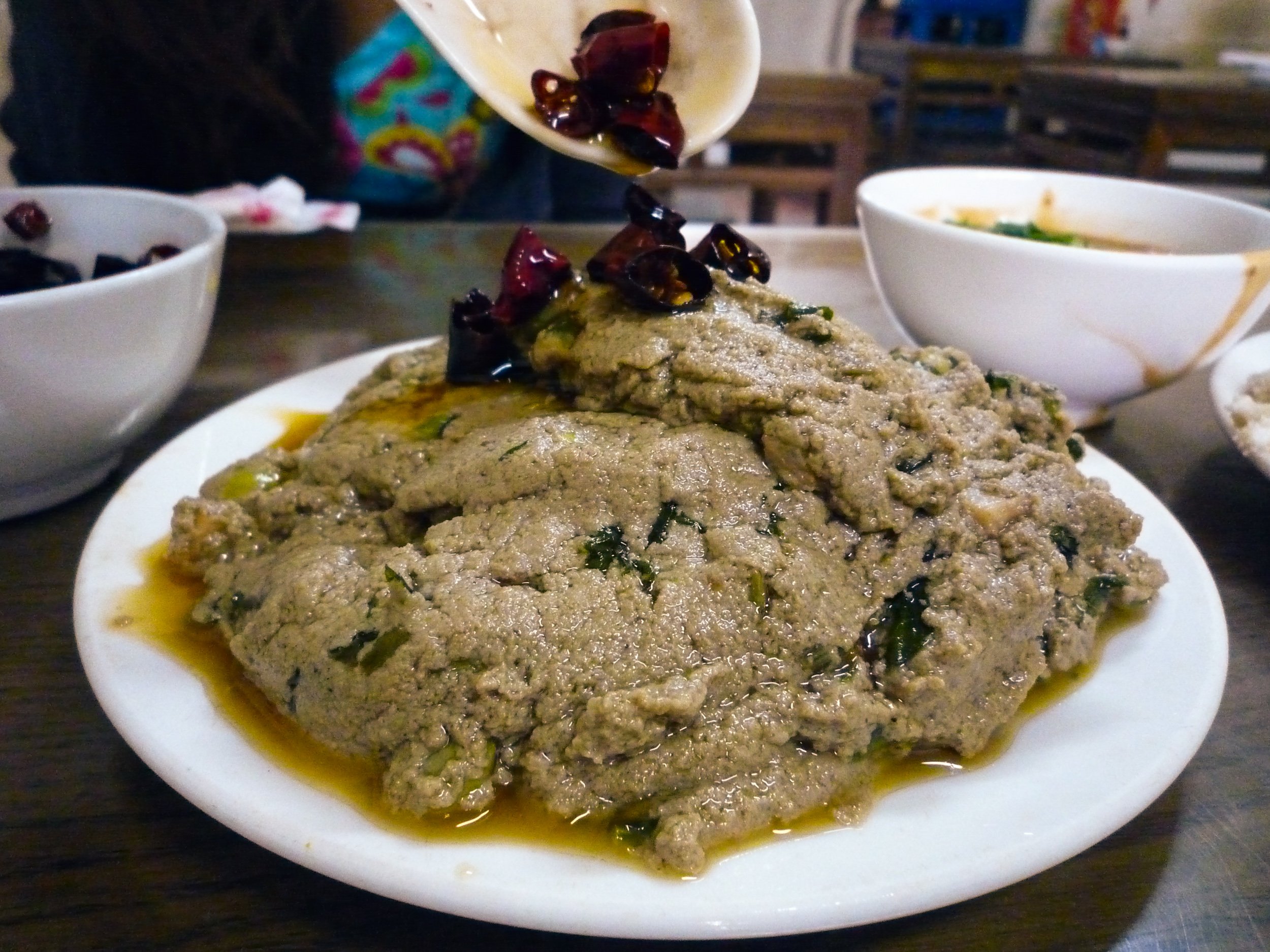10 things to eat in Beijing
Originally written for DK Online, a travel portal that his since closed.
Peking duck, Beijng’s signauture dish. Tom O’Malley
A northern city state where wheat rules over rice, Beijing food is hearty, salty and fortifying for those winters where the winds whip south from the Great Wall. Here are ten authentic Beijing dishes not to miss.
Peking Duck
The dish on every visitor’s must-eat list is beijing kaoya, otherwise known as Peking duck. Different from the ‘crispy duck’ eaten in Cantonese-style restaurants around the globe, authentic Peking duck is roasted over fruitwood in hung ovens then carved tableside in front of diners. Beijing’s Quanjude (30 Qianmen Street, Dongcheng District) introduced steamed pancakes, julienned veggies and soybean sauce in the 19th century, but before that the juicy duck meat was stuffed inside small sesame wheat buns called shaobing. The more contemporary Dadong (Nanxincang International Plaza, 22A Dongsishitiao) has perfected a slower roast resulting in a crisp, lacquered skin and a less oily, firmer lean meat, and has even branched out into fast food with a city-centre counter selling Peking duck burgers.
Barbecued Mutton
A large Muslim Chinese community has called Beijing home for 500 years, their halal habits fuelling the popularity of mutton, in rich supply on the grassy plains north of Beijing. Every street corner grills lamb skewers al fresco in the warmer months, doused in chilli and cumin and washed down with icy cold beer. The Chinese character for skewer (chuan’r - 串) is often picked out in a loop of red neon above a simple charcoal grill. For a more gourmet experience, Yanlanlou (12 Chaoyangmen Wai Dajie, Chaoyang District) grills delectable lamb ribs that tumble off the bone and melt in the mouth.
Hot Pot
The ultimate do-it-yourself dish, diners encircle a bubbling cauldron of (often spicy) soup, into which is dunked wafer-thin raw lamb and beef, tofu, mushrooms, greens, and more unusual accoutrements like ya chang (duck intestines). The spicy variety is characterised by a volcanic soup peppered with denglong jiao – stubby, cherry-shaped Sichuan chillis. One of the best all-round hot pot restaurants is Haidilao (2A Baijiazhuang Lu, Chaoyang District), where service goes the extra mile with complimentary snacks and even manicures as you wait for a table. Dong Lai Shun (98 Wangfujing Dajie, Dongcheng District) serves a more traditional Beijing-style mutton hotpot with a delicious sesame sauce for dipping.
Jianbing
Beijing’s most popular street food, this breakfast-style crepe is now trending in New York City. A batter of wheat flour and millet is cooked pancake-style on a circular griddle, an egg cracked on top, then chilli sauce and furu (fermented bean curd) is painted over it with a brush before a sprinkling of black sesame seeds, coriander and spring onion, and a large crispy wafer. It’s then folded into a steamy, layered parcel, and eaten on the move.
Zhajiang noodles
Beijing’s native noodle dish pairs thick, chewy wheat noodles with a dollop of rich meat sauce and a spread of accompaniments like cucumber, radish, beansprouts and crunchy soybeans, all mixed together with chopsticks before eating. At Old Beijing Zhajiang Noodle King (56 Dongxinglong Jie, Chongwen District) waiters greet diners with a shout, who squeeze around bench tables to slurp up the traditional (and cheap) tastes and atmosphere.
Beijing sweets
Huguosi Xiaochi (68 Huguosi Jie, Xicheng District) is a state-run time capsule hawking a range of traditional sweet snacks beloved of Beijing’s older residents. Take your pick from crispy fried dough rings, crunchy donuts flavoured with sugar and osmanthus flowers, jellies sweetened with red bean paste, and wandouhuang, a sweet cake made from pea flower. A quirky favourite is ludagun, a sweet, glutinous rice roll dusted in brown soybean flour. The visual name means ‘donkey rolling on the ground’.
Donkey sandwich
Donkey meat became popular in Beijing with the development of railways in northern China, after their transportation services were no longer in demand. Fatty Wang’s Donkey Sandwich (80 Gulou Xi Dajie, Xicheng District) is a popular chain, hawking lurou huoshao - flaky pockets of warm bread stuffed with thinly sliced, braised donkey meat.
Dumplings
The boiled dumpling is northern China’s go-to celebration food, eaten at almost every auspicious occasion. The standard filling is pork and cabbage, but almost any combination of meat, seafood and vegetable is available at Mister Shi’s Dumplings (74 Baochao Hutong, Dongcheng District), and even not-so-Chinese ingredients like mozzarella cheese. Dumpling varieties rooted in Beijing include dalian huoshao, shaped like gold bars and fried; and mending roubing, gut-busting meat pies crammed with beef, carrot and onions.
Madoufu
Quintessentially Beijing, this economical dish is a savoury mulch of mung bean pulp and pickled vegetables, fried in lamb fat. A dish from long ago now making comeback, it’s often enjoyed with baked sesame shaobing breads and flash-fried tripe at authentic institutions like Long Xingsheng Snacks (19 Ya’er Hutong, Xicheng District), in a quiet hutong alleyway north of Houhai Lake.
Luzhu Huoshao
A peasant dish dating back to the Qing Dynasty, this warming stew of cheaper meat and offal cuts, sesame bread, tofu and veggies is a big hit with taxi drivers and other blue collar Beijingers. The stock used at Lao Tang Luzhu (141 Yonghegong Lu, Dongcheng District) is richly flavoured; a little of the soup is saved every day to be added to the next day’s soup, hence the name ‘lao tang’, meaning old soup.

